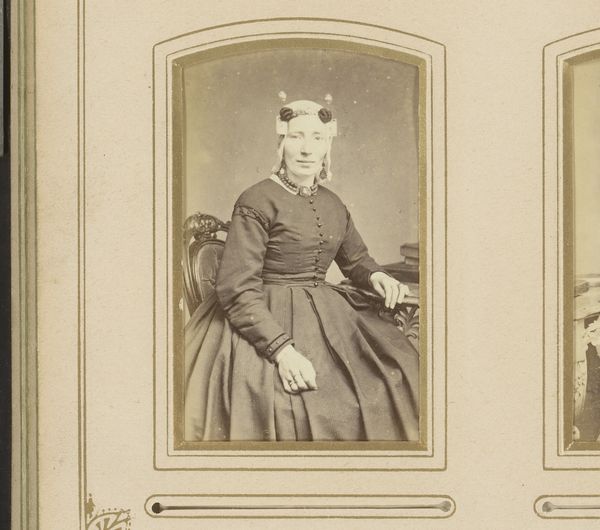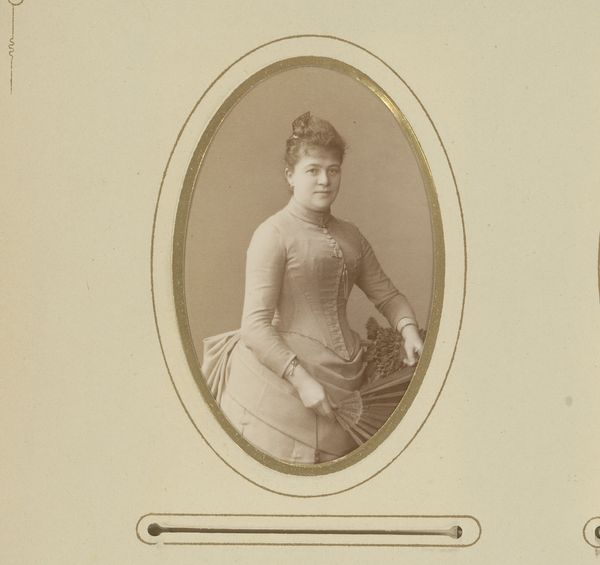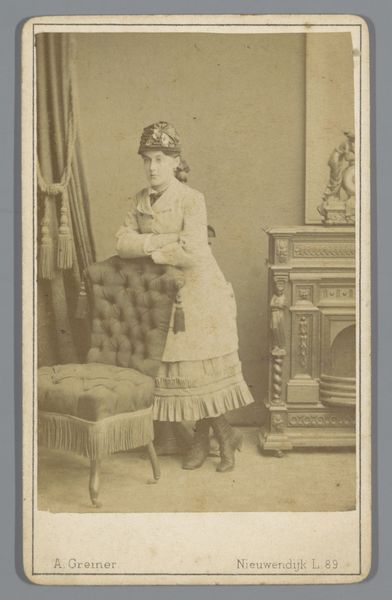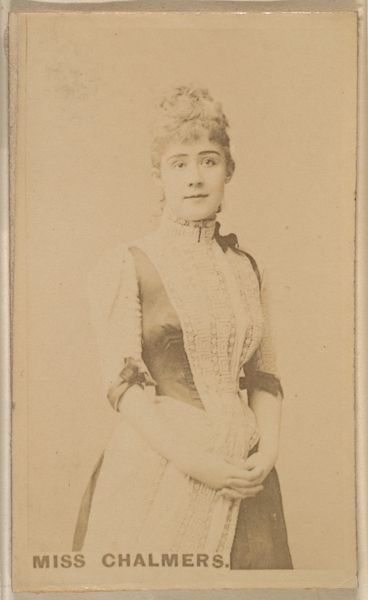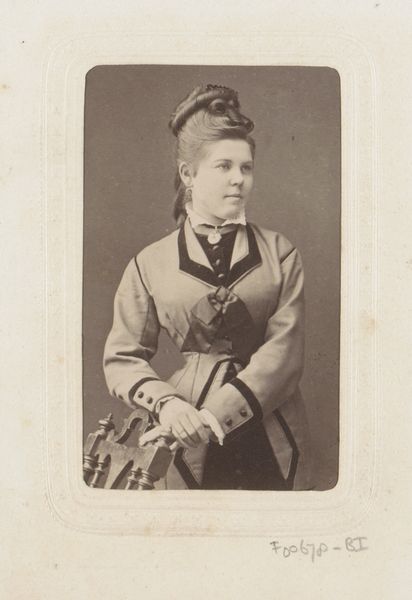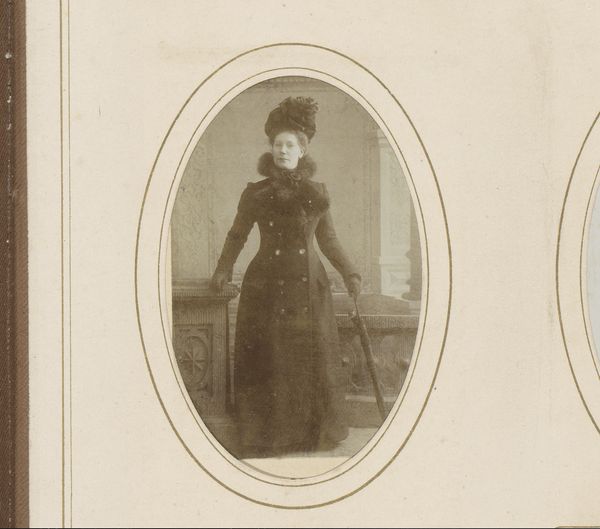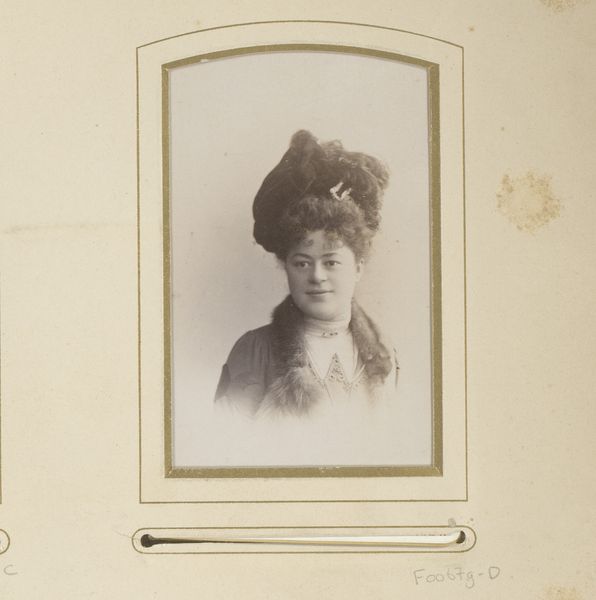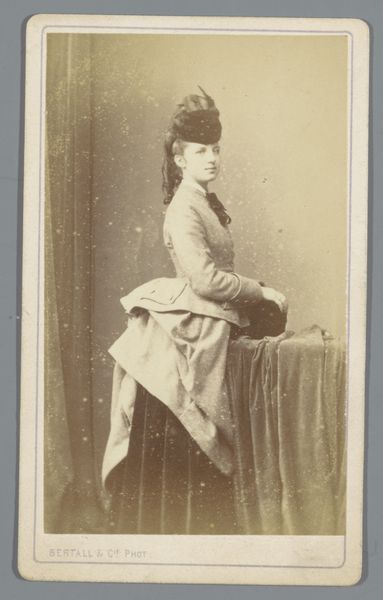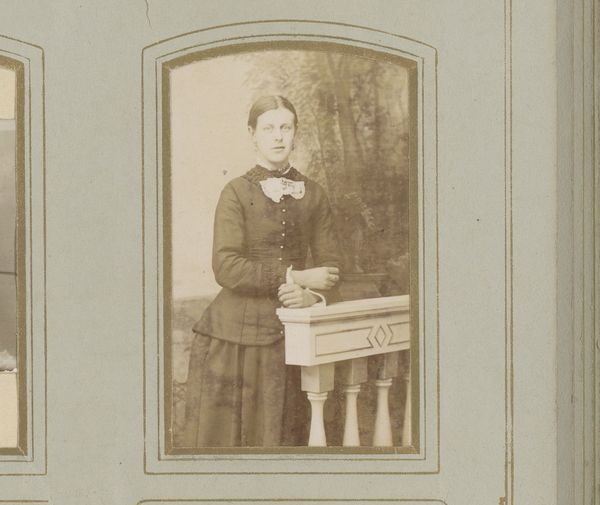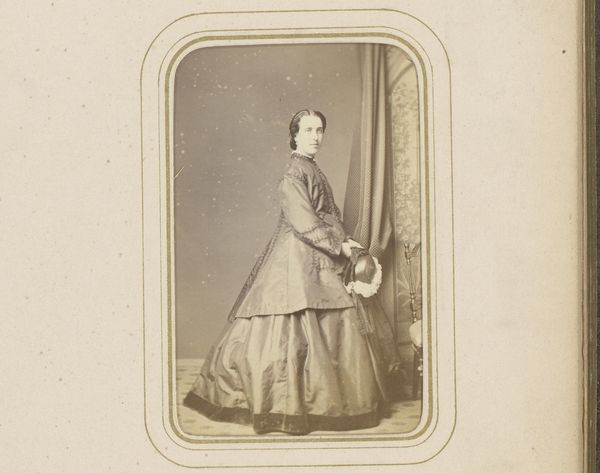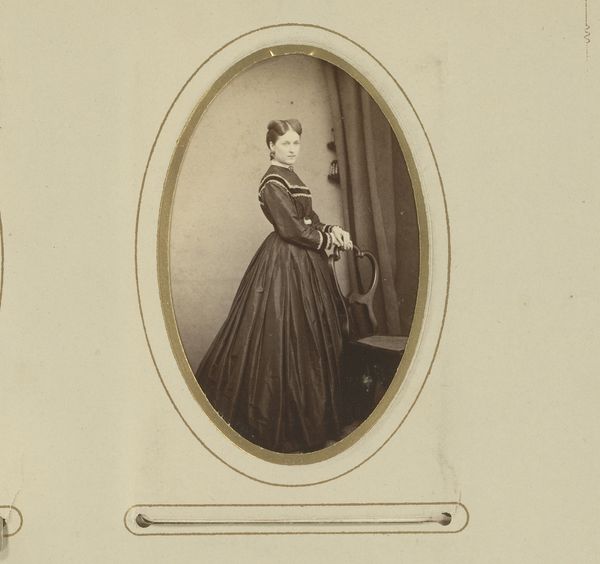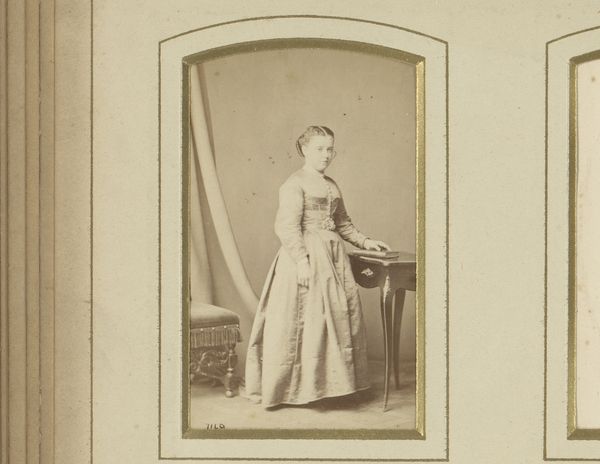
photography, gelatin-silver-print
#
portrait
#
aged paper
#
toned paper
#
16_19th-century
#
aged
#
vintage
#
antique
#
photo restoration
#
archive photography
#
photography
#
historical photography
#
old-timey
#
gelatin-silver-print
#
19th century
Dimensions: height 82 mm, width 50 mm
Copyright: Rijks Museum: Open Domain
Curator: Editor: So, this gelatin silver print, "Portret van een staande vrouw," dating from 1867 to 1904 by Johannes Ephraim, is really evocative. It's striking how much the material, the aged paper, contributes to its overall vintage feel. How would you interpret this piece, especially considering its medium? Curator: Let's focus on that medium - gelatin silver print. Mass production was emerging. Photography was not just about capturing an image but also about entering into industrial means, which democratized portraiture to a degree. Notice the woman's attire. Consider the labor involved in creating those garments, the social status they denote, and how this portrait, a manufactured object itself, played into those displays of class and taste. Does it complicate your initial feelings? Editor: Definitely. It makes me think about access. Was she from a family that benefited from the era's economic changes to afford the garments, a portrait, even though mass production made these relatively affordable, more common? Curator: Precisely. And consider the role of the photographer. This isn't just art; it's labor, a commodity. The very process involved materials, chemicals, a studio... all resources within a specific economy. How does recognizing these material conditions shift your understanding? Editor: It feels like it grounds the image. It's not just a pretty picture; it's evidence of social and economic factors. Now, what intrigues me the most is thinking about all of those details behind the creation, which were probably not obvious at first glance. Curator: And by focusing on those material realities, we've gained a richer understanding of the woman, the artist, and the broader societal context. It always comes back to how the thing was made, consumed, and circulated.
Comments
No comments
Be the first to comment and join the conversation on the ultimate creative platform.
